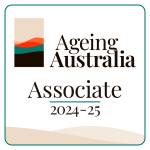AHPRA’s 2025 Fast-Track: New Path for Overseas Nurses

AHPRA’s 2025 Updates: Streamlining Registration for Overseas Nurses in Australia
In the ever-evolving landscape of international healthcare, Australia is taking significant strides to address its nursing shortages and enhance the diversity of its healthcare workforce. The Australian Health Practitioner Regulation Agency (AHPRA) has announced groundbreaking updates to its registration process for overseas nurses, set to take effect in March 2025. These changes promise to revolutionize the way internationally qualified registered nurses (IQRNs) from developed countries can integrate into the Australian healthcare system.
Introduction: A New Era for International Nursing in Australia
The Australian healthcare system has long grappled with the challenge of maintaining an adequate nursing workforce while ensuring the highest standards of patient care. Historically, the process for overseas nurses to gain registration in Australia has been complex, time-consuming, and often fraught with barriers. However, AHPRA’s 2025 updates are set to change this narrative dramatically.
At the heart of these changes is a streamlined registration process for nurses from developed countries, designed to expedite their integration into the Australian healthcare system without compromising on quality or safety. This new approach not only addresses the critical nursing shortages facing the country but also recognizes the valuable skills and experiences that international nurses bring to the table.
Background and Context: Understanding the Need for Change
Historical Challenges in Overseas Nurse Registration
For years, internationally qualified nurses seeking to practice in Australia faced a labyrinth of requirements. The process typically involved:
- Extensive documentation of qualifications and work experience
- English language proficiency tests
- Skills assessments
- Bridging programs or additional examinations
- Long waiting periods for application processing
This complex system often deterred highly qualified nurses from pursuing careers in Australia, exacerbating the country’s nursing shortages.
Current Nursing Shortages in Australia
Australia’s nursing shortage has reached critical levels in recent years. According to the Australian Nursing and Midwifery Federation, the country is projected to face a shortfall of approximately 123,000 nurses by 2030 if current trends continue. This shortage is particularly acute in rural and remote areas, where attracting and retaining healthcare professionals has been an ongoing challenge.
AHPRA’s Role in Regulating Health Practitioners
AHPRA, in conjunction with the Nursing and Midwifery Board of Australia (NMBA), plays a crucial role in regulating health practitioners across the country. Their primary responsibility is to protect public safety by ensuring that only suitably trained and qualified practitioners are registered to practice in Australia. The 2025 updates represent a significant shift in AHPRA’s approach, balancing the need for rigorous standards with the imperative to address workforce shortages efficiently.
Key Updates to AHPRA 2025: A Closer Look
New Registration Pathways
The cornerstone of AHPRA’s 2025 updates is the introduction of two distinct registration pathways for overseas nurses:
Pathway 1: For Nurses from Comparable Jurisdictions
This pathway is designed for nurses who have completed their qualifications and have substantial recent practice experience in countries with healthcare systems and nursing education standards comparable to Australia’s. Key features include:
- Eligibility for nurses from approved jurisdictions such as the UK, Ireland, the US, Canada (certain provinces), Singapore, and Spain
- Requirement of at least 1,800 hours of practice in the past five years in the comparable jurisdiction
- No additional clinical or theoretical examination required
Pathway 2: For Nurses Requiring Regulatory Examination
This pathway caters to nurses from countries not listed as comparable jurisdictions or those who do not meet the practice hours requirement of Pathway 1. It involves:
- A comprehensive regulatory examination to assess clinical competence and theoretical knowledge
- Assessment of English language proficiency
- Verification of qualifications and work experience
Reduced Wait Times and Administrative Burdens
One of the most significant benefits of the new system is the substantial reduction in processing times. AHPRA estimates that the streamlined process could cut wait times by up to 12 months for eligible applicants. This is achieved through:
- Simplified documentation requirements
- Faster credential verification processes
- Automated initial assessments using advanced digital platforms
Expanded List of Comparable Jurisdictions
AHPRA has broadened its list of comparable jurisdictions, recognizing the high standards of nursing education and practice in more countries. This expansion includes:
- United Kingdom
- Ireland
- United States
- Canada (British Columbia and Ontario)
- Singapore
- Spain
This recognition facilitates a smoother transition for nurses from these countries, acknowledging the compatibility of their qualifications and experience with Australian standards.
Impact on Overseas Nurses: Opening Doors to Opportunity
The 2025 updates promise to have a profound impact on overseas nurses considering a career in Australia. The streamlined process offers several advantages:
Faster Integration into Australian Healthcare System
With reduced wait times and simplified procedures, overseas nurses can now expect to begin their Australian nursing careers much sooner. This rapid integration allows them to:
- Start contributing to the healthcare system quickly
- Gain valuable Australian work experience earlier
- Establish themselves professionally in their new environment
Increased Job Opportunities
The expedited registration process opens up a wider range of job opportunities for overseas nurses. They can:
- Apply for positions while their registration is being processed
- Explore opportunities in various healthcare settings across Australia
- Benefit from the increased demand for nursing professionals
Recognition of Existing Qualifications and Experience
For nurses from comparable jurisdictions, the new system represents a significant acknowledgment of their professional standing. This recognition:
- Validates their international experience and qualifications
- Reduces the need for additional examinations or bridging courses
- Boosts confidence in their ability to practice effectively in Australia
Benefits for Australian Healthcare: A Win-Win Situation
The streamlined registration process is not just beneficial for overseas nurses; it also offers substantial advantages to the Australian healthcare system:
Addressing Workforce Shortages
By facilitating the entry of qualified overseas nurses, the new system helps to:
- Fill critical gaps in the nursing workforce
- Reduce pressure on existing staff
- Improve patient-to-nurse ratios in healthcare facilities
Enhancing Diversity in Healthcare Teams
The influx of international nurses brings diverse perspectives and experiences to Australian healthcare teams. This diversity:
- Enhances cultural competence in patient care
- Introduces new ideas and approaches to healthcare delivery
- Fosters a more globally-minded healthcare workforce
Improving Patient Care through Experienced Professionals
Many overseas nurses bring years of experience from different healthcare systems. This wealth of experience can:
- Introduce innovative practices and techniques
- Enhance the overall quality of patient care
- Contribute to professional development within nursing teams
Implementation Timeline and Process: A Phased Approach
The rollout of AHPRA’s new registration system is carefully planned to ensure a smooth transition:
March 2025 Rollout
The new pathways are set to launch in March 2025, marking a significant milestone in Australia’s approach to international nursing registration.
Transition Period for Existing Applicants
AHPRA has outlined a transition plan for nurses who have already begun the registration process under the old system. This includes:
- Options to transfer to the new pathways where eligible
- Continued processing under the old system if preferred
- Clear communication and guidance for all affected applicants
Coordination with Immigration Policies
The implementation of the new registration system is being coordinated with relevant immigration authorities to ensure:
- Alignment between visa processes and registration timelines
- Clear pathways for overseas nurses from application to employment
- Streamlined processes for employers seeking to recruit international nurses
Comparison with Previous System: A Leap Forward
To fully appreciate the significance of the 2025 updates, it’s important to compare them with the previous registration system:
| Aspect | Old System | New System |
|---|---|---|
| Registration Process | Complex, multi-step process | Streamlined, two-pathway approach |
| Processing Time | Up to 2 years in some cases | Reduced by up to 12 months |
| Cost | High, including potential bridging course fees | Reduced, especially for Pathway 1 applicants |
| Accessibility | Limited to nurses willing to navigate complex processes | More accessible to qualified nurses from comparable jurisdictions |
| Recognition of Overseas Experience | Limited, often requiring additional assessment | Greater recognition, especially for nurses from comparable jurisdictions |
This comparison highlights the significant improvements in efficiency, cost-effectiveness, and accessibility offered by the new system.
Potential Challenges and Concerns: Addressing the Critics
While the new registration system offers many benefits, it’s important to address potential challenges and concerns:
Maintaining Standards of Care
Critics may argue that streamlining the process could lead to a lowering of standards. However, AHPRA emphasizes that:
- The new system maintains rigorous checks on qualifications and experience
- Comparable jurisdictions are selected based on stringent criteria
- Ongoing professional development requirements remain in place for all registered nurses
Impact on Local Nursing Education and Employment
There are concerns about how the influx of overseas nurses might affect opportunities for locally trained nurses. To address this, AHPRA and the Australian government are:
- Continuing to invest in domestic nursing education programs
- Implementing workforce planning strategies to balance international recruitment with local workforce development
- Encouraging overseas nurses to work in areas of greatest need, including rural and remote locations
Cultural and Language Adaptation
The integration of overseas nurses into the Australian healthcare system may present cultural and linguistic challenges. To mitigate these:
- Cultural competency training programs are being developed
- Language support services are being enhanced
- Mentorship programs are being established to pair overseas nurses with experienced local colleagues
How To: Navigating the New AHPRA Registration Process
Step 1: Determine Eligibility for Streamlined Pathways
- Check if your country of qualification and practice is listed as a comparable jurisdiction
- Verify that you meet the 1,800 hours of recent practice requirement for Pathway 1
Step 2: Gather Required Documentation
- Prepare certified copies of your nursing qualification
- Obtain evidence of your registration status in your home country
- Collect detailed work history documentation
Step 3: Complete Online Application
- Create an account on the AHPRA online portal
- Fill out the application form, providing all required information
- Upload scanned copies of your documents
Step 4: Undergo Credential Verification
- AHPRA will initiate the verification process with relevant authorities in your home country
- Be prepared to provide additional information if requested
Step 5: Attend In-Person Document Check
- Schedule an appointment at an AHPRA office
- Bring original documents for verification
Tips for a Smooth Application Process
- Start gathering documents early, as some may take time to obtain
- Keep copies of all submitted documents and correspondence
- Stay informed about any updates or changes to the registration process through AHPRA’s official channels
FAQ Section: Answering Your Burning Questions
Q1: Can I start working immediately after registration?
A: While registration is a crucial step, you’ll also need to secure appropriate work visas and meet any additional employer requirements before starting work.
Q2: What language requirements are there for overseas nurses?
A: All applicants must demonstrate English language proficiency. For Pathway 1 applicants, this is often demonstrated through recent practice in an English-speaking country. Pathway 2 applicants may need to take an approved English language test.
Q3: How does the new system affect nurses from non-comparable countries?
A: Nurses from non-comparable countries can still apply through Pathway 2, which involves a regulatory examination. While this process is more involved than Pathway 1, it is still designed to be more efficient than the previous system.
Q4: Are there any additional requirements for specialized nursing roles?
A: Yes, certain specialized roles (e.g., nurse practitioners) may have additional registration requirements. It’s important to check the specific requirements for your intended area of practice.
Q5: Can I appeal if my application is rejected under the new system?
A: Yes, AHPRA maintains an appeals process for registration decisions. The process and grounds for appeal will be clearly communicated in any rejection notification.
Challenges and Solutions: Paving the Way for Success
Challenge: Ensuring Consistent Quality of Care
Solution: Implement robust orientation programs and ongoing professional development opportunities for all nurses, including those from overseas. This ensures that all practitioners are up-to-date with Australian healthcare standards and practices.
Challenge: Cultural Integration of Overseas Nurses
Solution: Develop comprehensive cultural competency training programs and establish mentorship initiatives. These programs will help overseas nurses adapt to Australian healthcare culture while also enriching local teams with diverse perspectives.
Challenge: Balancing Overseas Recruitment with Local Workforce Development
Solution: Implement strategic workforce planning that includes:
- Continued investment in domestic nursing education
- Targeted recruitment of overseas nurses to fill specific skill gaps
- Incentives for nurses (both local and international) to work in underserved areas
Ethical Considerations and Best Practices
As Australia embraces this new approach to international nurse registration, several ethical considerations come to the forefront:
Maintaining Patient Safety and Care Quality
While streamlining the registration process, it’s crucial to ensure that patient safety remains the top priority. This involves:
- Rigorous verification of qualifications and experience
- Ongoing monitoring and support for newly registered overseas nurses
- Regular reviews of the registration process to identify and address any potential risks
Ensuring Fair Treatment of All International Applicants
The new system must be implemented in a way that is equitable and transparent for all applicants. This includes:
- Clear communication of eligibility criteria and process requirements
- Consistent application of standards across all comparable jurisdictions
- Fair assessment processes for nurses from non-comparable countries
Balancing Global Nurse Mobility with Local Workforce Needs
As Australia opens its doors wider to international nurses, it’s important to consider the global impact of healthcare worker migration. Ethical recruitment practices should:
- Respect international agreements on healthcare worker migration
- Consider the healthcare needs of source countries
- Support initiatives that promote global health workforce sustainability
Addressing Potential Brain Drain in Source Countries
To mitigate the potential negative impact on healthcare systems in source countries, Australia should:
- Engage in bilateral agreements with source countries to support their healthcare systems
- Encourage temporary migration and knowledge exchange programs
- Invest in global nursing education initiatives
Success Stories: Realizing the Potential of International Nursing
Case Study: UK Nurse’s Smooth Transition to Australian Healthcare
Sarah, a registered nurse with 10 years of experience in the UK’s National Health Service, applied for registration in Australia under the new Pathway 1 system. Her experience:
- Application submitted in April 2025
- Registration granted within 8 weeks
- Started work at a major Sydney hospital by July 2025
- Reported feeling well-prepared and supported in her new role
Sarah’s story highlights the efficiency of the new system and its potential to quickly bring experienced professionals into the Australian workforce.
Testimonial: Hospital Administrator on Improved Staffing Levels
“The new registration system has been a game-changer for us. We’ve been able to fill critical vacancies with highly qualified overseas nurses in a fraction of the time it used to take. These nurses bring diverse experiences that enrich our teams and improve patient care.”
Impact Story: Rural Hospital Revitalized by International Nurses
The Outback Regional Hospital in Western Australia faced chronic staffing shortages for years. With the new registration system:
- 5 overseas nurses were recruited and registered within 3 months
- Patient wait times decreased by 30%
- Staff morale improved significantly
- The hospital was able to expand its services to the community
This success story demonstrates how the streamlined registration process can have a profound impact on healthcare delivery, especially in underserved areas.
Tools and Resources: Supporting Your Journey
To facilitate a smooth transition for overseas nurses, several tools and resources are available:
AHPRA Online Application Portal
- User-friendly interface for submitting applications
- Real-time status updates on application progress
- Secure document upload functionality
Credential Verification Services
- Partnered with international verification agencies for faster processing
- Automated checks with nursing boards in comparable jurisdictions
Professional Support Networks for International Nurses
- Online forums and social media groups for peer support
- Mentorship programs connecting new arrivals with experienced nurses
Cultural Adaptation Resources
- Online courses on Australian healthcare culture and practices
- Language support services for non-native English speakers
- Guides to living and working in Australia for healthcare professionals
Conclusion: A Brighter Future for International Nursing in Australia
The AHPRA 2025 updates represent a significant leap forward in Australia’s approach to international nurse registration. By streamlining the process for qualified nurses from comparable jurisdictions and improving pathways for all international applicants, Australia is positioning itself as a welcoming destination for global nursing talent.
These changes promise to:
- Address critical workforce shortages in the Australian healthcare system
- Enhance the diversity and richness of nursing teams across the country
- Improve patient care through the infusion of international experience and perspectives
For overseas nurses considering a move to Australia, there has never been a better time to take that step. The new registration pathways offer a clearer, faster route to practicing in one of the world’s most advanced healthcare systems.
As we look to the future, it’s clear that these updates will play a crucial role in shaping the landscape of healthcare in Australia. By balancing efficiency with rigorous standards, AHPRA is ensuring that Australia can meet its healthcare needs while maintaining the high-quality care that patients deserve.
For those ready to embark on this exciting journey, we encourage you to explore the resources provided and begin your application process. Your skills, experience, and dedication are needed and valued in Australia’s healthcare system.
Additional Resources
For more information and support, please refer to the following resources:
- AHPRA Official Website
- Australian Nursing and Midwifery Federation Resources
- Department of Home Affairs Immigration Information
- State-specific Health Department Guidelines
These resources will provide you with the most up-to-date information on registration requirements, visa processes, and support services available to international nurses in Australia.
As you consider this exciting opportunity, remember that your skills and experience are not just welcomed, but essential to the future of healthcare in Australia. We look forward to the valuable contributions you’ll make to our healthcare system and communities.









